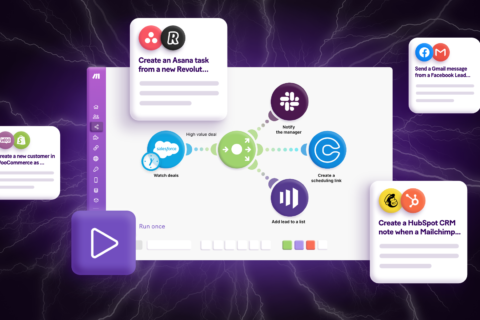Introduction To Rai Van
In the world of logistics and transportation, few vehicles are as versatile and essential as the Rai Van, also known as a railway van. Designed specifically for rail transport, Rai Vans play a crucial role in moving both passengers and cargo efficiently across vast distances. As rail networks continue to expand and evolve, the importance of these specialized vehicles only grows, making them a cornerstone of modern transportation infrastructure.
Understanding the Rai Van
A Rai Van is a specialized vehicle engineered for operation on railway tracks. Unlike traditional trains, which consist of multiple carriages, Rai Vans can operate as single units or in smaller sets. This flexibility allows them to be tailored to various logistical needs, whether transporting passengers or freight. With their unique design and capabilities, Rai Vans provide a versatile solution that meets the demands of today’s fast-paced world.
Historical Context
The concept of Rai Vans dates back to the early development of railways in the 19th century. Initially, these vehicles were primarily used for transporting goods, but as rail networks expanded, they began to incorporate passenger transport as well. The Industrial Revolution played a significant role in this evolution, as the demand for efficient transportation solutions surged. Today, it have become integral to both freight and passenger services, reflecting their adaptability and importance in the transportation sector.
Design and Features
They are meticulously engineered to withstand the rigors of rail transport. Constructed from high-strength materials like steel and aluminum, they are designed to handle heavy loads while ensuring stability and durability. Key design features include:
- Advanced Suspension Systems: To minimize vibrations and provide a smoother ride.
- Climate Control: Enhancing passenger comfort in various weather conditions.
- Ergonomic Seating: Designed for comfort during longer journeys.
- Sophisticated Braking Systems: Including regenerative braking for energy efficiency.
Safety is paramount in the design of Rai Vans. Features such as reinforced structures, collision detection systems, automated braking, and fire suppression systems are standard, ensuring the well-being of both passengers and cargo.
The Role of Technology
Technological advancements have significantly impacted the evolution of it. Innovations such as electric Rai Vans and autonomous operations are paving the way for a more sustainable and efficient future in rail transport. Electric Rai Vans produce zero emissions, contributing to a reduction in the overall carbon footprint of rail transportation. Additionally, the integration of IoT connectivity allows for real-time tracking and monitoring, enhancing operational efficiency and safety.
Types of Rai Vans
It come in several configurations, each tailored for specific applications:
- Passenger Rai Vans: Designed for transporting people, often equipped with amenities like seating, restrooms, and entertainment systems.
- Cargo Rai Vans: Used for transporting goods, available in various configurations such as refrigerated vans, box vans, and flatbeds.
- Specialized Rai Vans: Customized for unique applications, including medical services and luxury travel.
Maintenance and Longevity
Regular maintenance is crucial for ensuring the longevity and performance of Rai Vans. Routine inspections, servicing, and repairs are conducted to address wear and tear. Advanced diagnostic tools are employed to identify and resolve issues efficiently, ensuring that these vehicles remain operational and safe.
Conclusion: The Future of Rai Vans
As the backbone of modern transportation, they are set to play an increasingly vital role in the logistics and rail sectors. With ongoing advancements in technology and a focus on sustainability, the future of it looks promising. Innovations such as hydrogen fuel cells and solar-powered systems are being explored, aiming to further enhance their efficiency and reduce environmental impact. In a world where efficient transportation solutions are more important than ever, It stand out as a versatile and essential component of the rail network, ensuring that both passengers and cargo can be transported safely and effectively across vast distances. As we move forward, the continued development and integration of Rai Vans will be key to shaping the future of transportation.
FAQs
1. What is a Rai Van?
A Rai Van, also known as a railway van, is a vehicle designed specifically for rail transportation. It is used for both passenger and cargo transport, offering a versatile solution for various logistical needs.
2. How are they different from regular trains?
Rai Vans are specialized vehicles that can be part of a train or operate independently on rail tracks. Unlike regular trains, which are usually composed of multiple carriages, it can be single units or connected in smaller sets depending on their purpose.
3. How has technology impacted it?
Technological advancements have significantly impacted it, leading to innovations such as electric Rai Vans, autonomous operations, and IoT connectivity. These technologies improve efficiency, safety, and environmental sustainability.
4. Who are the major manufacturers of this vehicle?
Leading manufacturers of Rai Vans include Bombardier, Siemens, Alstom, and CRRC Corporation. These companies are known for their high-quality production and innovative designs in the railway industry.
5. What safety features are included in this modern vehicle?
Modern Rai Vans are equipped with numerous safety features such as reinforced structures, collision detection systems, automated braking, and fire suppression systems. These features are designed to ensure the safety of both passengers and cargo.












